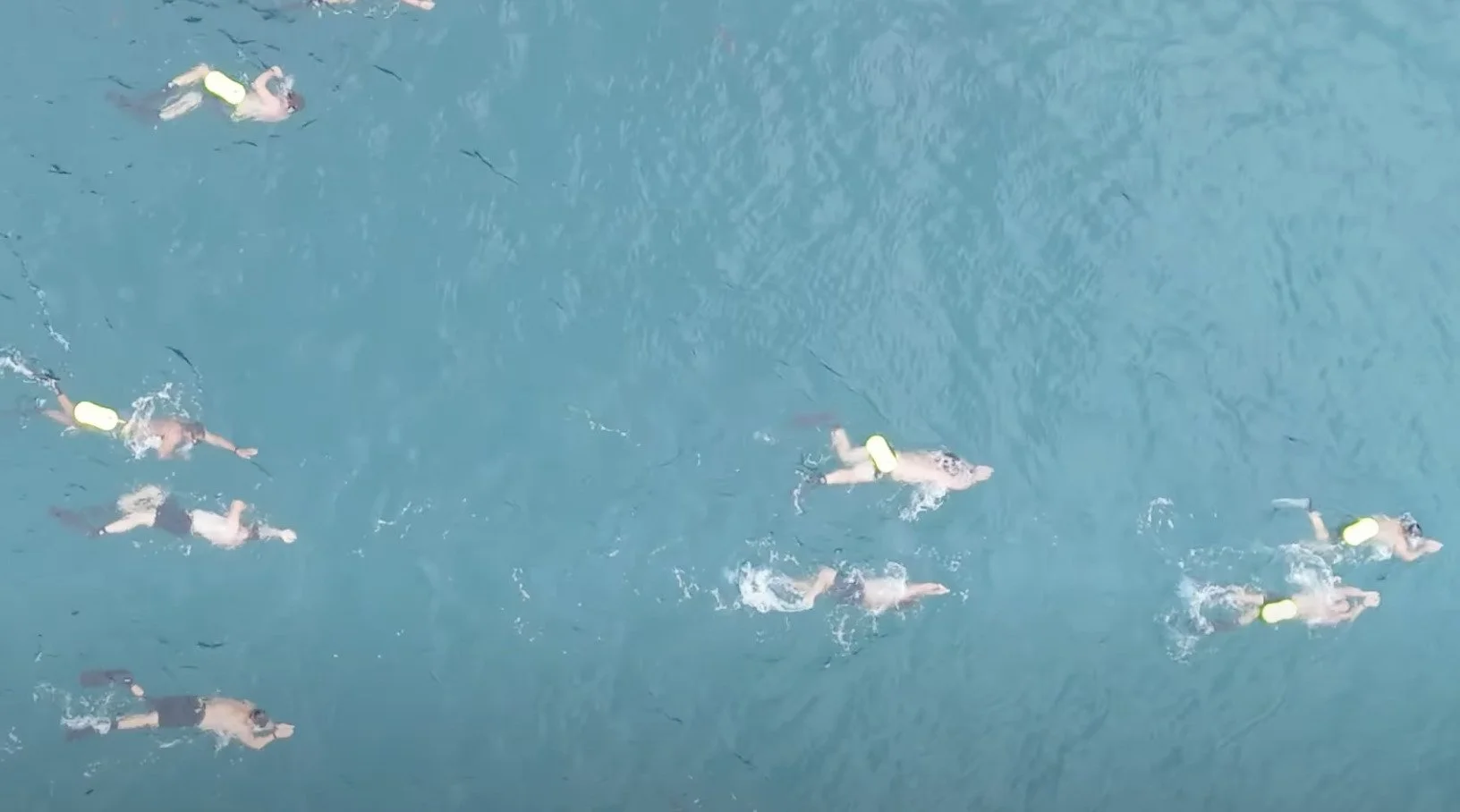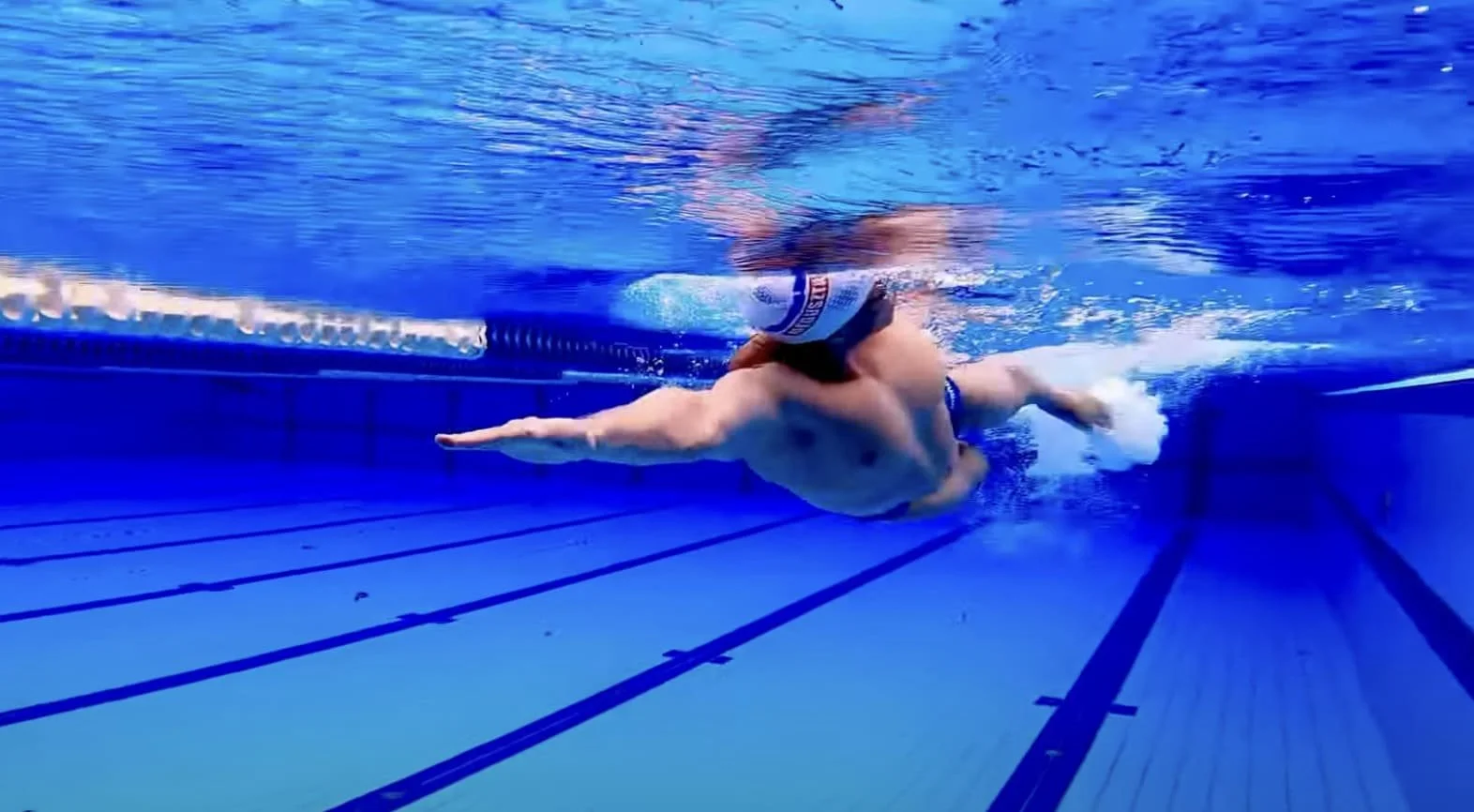From Side Stroke to Combat Side Stroke: How to Transition Your Technique
/Last time, we covered the basics of side stroke – a timeless, energy-efficient swim often overlooked in modern training. If you missed it, check out the full article here.
Now, let’s take it one step further.
If you’ve ever watched Navy SEALs or combat swimmers in action, you’ve likely seen a sleeker, more tactical variation of the side stroke. It’s called the combat side stroke – a hybrid technique designed for stealth, efficiency, and endurance in unpredictable open water. In today’s post, I’ll break down the combat stroke technique, how it compares to traditional side stroke, and how to start practicing it in your own swim sessions.
Real-Time Combat Stroke in Action
Curious how the combat stroke looks when applied in a pool setting?
Here’s a short clip where I’m experimenting with different combat stroke techniques, using elements of breaststroke and butterfly to enhance glide, propulsion, and timing. I’m keeping it to four strokes per length, holding a steady 1:30/100m pace in a short course pool.
Playing with some combat stroke techniques using my breaststroke and butterfly strengths. 4 strokes per length at a 1:30/100m pace short course.
Notice how the rhythm of the stroke prioritizes efficiency and control over raw speed. This is key to the combat swimmer stroke – especially when you’re looking to build tactical endurance or sharpen open water skills.
What Is the Combat Side Stroke?
The combat side stroke (CSS) is a modified version of the traditional side stroke developed by and for combat swimmers – especially Navy SEALs and special operations candidates. It combines elements of freestyle, breaststroke, and side stroke into one smooth, powerful motion.
Unlike pool swimming where speed and split times dominate, the combat swimmer stroke is all about conserving energy, reducing your profile in the water, and swimming long distances efficiently. Think under-the-radar, not record-breaking speed.
Combat Side Stroke vs. Side Stroke: Key Differences
| Stroke Element | Traditional Side Stroke | Combat Side Stroke |
|---|---|---|
| Body Position | Lateral (on one side), head above the water | Lateral (on one side), head down in streamline. Rolled to the side when breathing. |
| Arm Movement | Scissor arms (simultaneous) | One arm pulls (freestyle-like), the other recovers |
| Kick | Scissor kick | Scissor kick with flutter boost during the glide |
| Breathing | As needed on one side | Timed with each stroke for minimal drag |
| Purpose | Lifesaving, basic swim | Stealth, endurance, mission/combat-driven swimming |
While the side stroke uses a simultaneous scissor kick and glide, the combat swimming stroke incorporates a scissor kick followed by a streamlined glide and a flutter kick, making it more adaptable to long swims in open or combat environments.
Combat Side Stroke Technique Breakdown
Learning the combat stroke involves refining several critical elements. Here’s a breakdown of combat side stroke steps you can follow:
1. Start in a Streamlined Glide
Begin on your stomach in a tight streamline position with arms extended overhead, legs together, and core engaged.
2. Freestyle Pull with Top Arm
Pull the top arm (facing the surface) back to your hip like in freestyle – hand enters the water near the shoulder line, pulls straight back, then recovers along the side, through the water, aligned with the shoulder.
3. Breaststroke Pull with Bottom Arm
As the top arm completes its pull, the bottom arm performs a sweeping breaststroke motion and ends near the chest – this helps with propulsion and balance.
4. Scissor and Flutter Kick
After the arm motions, perform a scissor kick by extending the bottom leg back, while flexing the top leg forward and up.
5. Streamline and Glide
Quickly extend both arms overhead, shoulder width apart, head down and between your arms, as you squeeze your legs together, then perform a flurry of flutter kicks in a long taut streamline.
Repeat the sequence. Your combat recovery stroke should feel fluid and efficient – not rushed.
Combat Stroke Technique Tips
If you’re just starting to practice this, here’s what I often tell my swimmers:
Prioritize smooth transitions. This isn’t about speed – yet. Focus on rhythm, alignment, and low-drag recovery.
Use short sets. Start with 25-yard or 50-yard repeats and gradually build up.
Watch your kick. Avoid excessive splash – that defeats the purpose of a low-visibility swim, but also creates turbulence and drag.
Drill with purpose. Break the stroke into pieces focusing at times on pull or kick development, then piece it together.
I’ve seen swimmers make faster progress by filming themselves or reviewing combat side stroke drawing diagrams to visualize correct form between sessions. Schedule your video analysis here.
Drill to Try: Combat Stroke Progression
Here’s a simple pool progression I give to swimmers new to this stroke:
25 yards side stroke (Right side)
25 yards combat stroke (Left side)
25 yards combat stroke (Alternating sides)
50 yards scissor kick with a board
Repeat 2–3 rounds, rest 15s between lengths
Suggested Equipment:
- Snorkel – Optional tool for early technique work and breathing isolation
- Kickboard – Provides a point of contact during isolation drills and kick-focused sets
- Hand Paddles – Helps improve hand entry, catch mechanics, and adds upper body resistance
Why Train the Combat Swim Stroke?
You don’t have to be military-bound to benefit from the combat swimmer stroke. It’s an excellent way to improve:
Body positioning awareness
Underwater control
Endurance with minimal exertion
Whether you’re preparing for military fitness testing, adventure races, or just looking for a new training challenge, the combat side stroke swimming technique offers tactical advantages most swimmers overlook.
Add Combat Stroke to Your Swim Arsenal
If you’ve already worked on the fundamentals of side stroke, the combat side stroke is the next evolution. It’s more than just a military stroke – it’s a test of your ability to move efficiently, stay relaxed under pressure, and control your body in open water.
👉 Train with Dan Daly and get personal stroke feedback, combat-style conditioning, and open water prep tailored to your swim goals.
Author Bio:
Dan Daly is a CSCS-certified swim coach with over 20 years of experience training competitive and tactical athletes. He’s the founder of Train Daly and innovator in water and land training for aquatic athletes.


